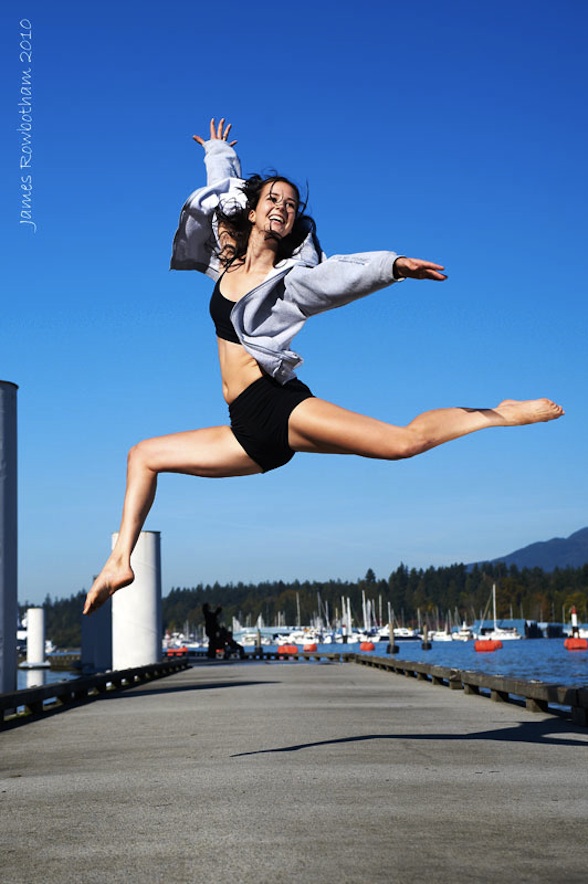Happy Leap Day!

There’s no better day of the year (or at least every fourth year) to work on improving your “split leaps,” like grand jeté and saut de chat. So prepare to propel yourself to new heights with these 10 essential pointers:
Build momentum in your preparation. Your preparatory steps (like a run, glissade, or chassé) should be light and lifted.
Take flight with a strong push from plié. Heel, ball, toe is super important for power and for and a pretty pointe.
Split quick and and split hard. Timing is everything in a good leap, the legs should shoot out at almost the same time.
Get your torso over your hips. Leaning too far forward reduces your height but leaning too far back holds you back.
Know what you want your leap to look like. Should it burst or dart or float effortlessly? You need to be able to picture what your jeté or saut de chat will look like mid-air so that you can adjust and direct your flow of energy accordingly.
Take a deep breath. Doing so at the peak of your arc can make it seem like you’re soaring.
Don’t tense up. Your arms especially should travel smoothly and softly through specific positions (usually from a classical 1st) rather than go stiff or flail around.
Stretch. If you can’t achieve a split on the ground, it’s unlikely you’ll achieve it in the air.
But don’t stretch too much. Flexibility is important but there’s more to it. You need strength and lots of control too. Good core strength and alignment is critical.
Stay lifted on the landing. Avoid collapsing on touchdown. All together now… core and alignment!
Switch it up
Ok, so what about switch leaps? The same tips apply really but here are a few more specific to a jeté that changes legs mid-air:
Focus more on the “second” split. The first leg is thrown relatively low (especially when you’re first learning) – the second split is the one with all the power.
It’s all in the timing. Your working leg has to move fast to get from the front to back. Practice the switch with a just hop first. When you’ve got the timing add the battement of the second leg. Remember, when the leg is extended front, your second leg is still under you and you’re in the air, as the leg switches the hopping leg thrusts up, hitting the split at the same time as the initiating leg.
We hope these tips will help you soar every day of the year! Do you have more leaping advice?
Share it in the comments!
Nichelle Suzanne is a writer specializing in dance and online content. She is also a dance instructor with over 20 years experience teaching in dance studios, community programs, and colleges. She began Dance Advantage in 2008, equipped with a passion for movement education and an intuitive sense that a blog could bring dancers together. As a Houston-based dance writer, Nichelle covers dance performance for Dance Source Houston, Arts+Culture Texas, and other publications. She is a leader in social media within the dance community and has presented on blogging for dance organizations, including Dance/USA. Nichelle provides web consulting and writing services for dancers, dance schools and studios, and those beyond the dance world. Read Nichelle’s posts.

